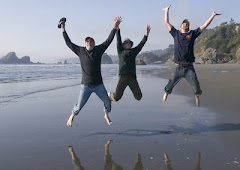It’s been a lousy spring in northern New Mexico: freezing cold
(except for a few days when we were tantalized with 70 degrees); incessant
wind; and negligible rain. I lost all my fruit except for a few plums and sour
cherries; the sweet cherry blooms were starting to form and then disappeared
after three nights of 15 to 20 degree temperatures. The apples never formed
blossoms at all. I know the folks down in Albuquerque are thankful that the
ninety-degree days have yet to begin, but unless it’s hot in Albuquerque it’s
still winter up here.
Right now I’m experiencing the juxtaposition of sitting by
the fire before going out to check the irrigation water in my fruitless
orchard. While the run-off from the high country snow has yet to come (Jakob
was up skiing the chutes and measured five feet of snow) my first-in-line
village is using the mid to low level run-off to jump start the hay fields and
orchards that will all too soon be thirsty. The dismal monthly predictions
issued by the Natural Resources Conservation Service have most watersheds at less
than 50 per cent of normal snowpack, and the farmers in southern New Mexico are
pumping the aquifer to keep their crops alive because there isn’t enough water
in Elephant Butte Reservoir to release for irrigation. Texas is suing New
Mexico claiming non-delivery of Rio Grande Compact water because, as we all
know, groundwater and surface water are inextricably entwined. Looks like
dismal spring will segue into dismal summer, especially for those whose
livelihoods are threatened by this terrible drought exacerbated by climate
change.
I can still grow some vegetables in my garden and hoop house
and go to the grocery store for the rest. Living off the land is more an idea
than a reality for me (much less a necessity, of course). That’s not to say,
however, that my attachment to, and appreciation of, this place where I live
isn’t foremost in mind even as I complain. I have a warm, homemade adobe house, small courtyard of grass and flowers, orchard, garden, hoop house, fields of
hay, two acequias, and one river as my “place.” I can’t imagine who I might be
in a different place. Half my time is spent dealing with it: irrigating the hay
fields; pruning the trees; rototilling, planting, and then weeding the garden; weed
whacking the orchard grass; waging war against the burdock down in the bosque; trying
to figure out why Jack the horse has lost hair on two patches of his back;
cutting firewood for winter. Speaking of winter; that’s when I have to split the
firewood and kindling, bring it to the house, make and sustain a fire every day,
shovel the driveway and deck, and feed the horse.
What else would I be doing? Writing novels? I’ve written two
of them plus a collection of short stories (all in the bottom drawer of my
desk, as we used to say before computers). Working at a real job? The only ones
I ever had were as a seasonal employee of the Forest Service in a fire lookout
or patrolling the mountains by truck or on foot. Now my job is to harangue the
Forest Service in the pages (actually, on the web) of La Jicarita, which I can do without ever leaving my “place.”
How long I can keep doing this remains to be seen. I figure
if I’m lucky I’ve got ten more years here by myself, with a little help from my
friends (like cutting the wood) and mother nature, with a little more rain and snow. Then what? I haven’t lived in a town for 40
years. Albuquerque? Too hot, in water crisis mode, and there’s no guarantee
Jakob and Casey will still be there. Santa Fe? Unaffordable, bourgeois, also
running out of water (although busily importing agricultural water to make up
for it). Wherever Max ends up? Doubtful; we may talk on the phone all the time
and have fun together, but does he want to live with his mother? Nah.
So back to just being here, day by day, until I can’t be
here. Then I’ll be there, wherever there might be. I’ll worry about where is
there tomorrow.

No comments:
Post a Comment